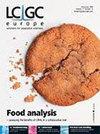Theo van Doesburg and Le Corbusier
IF 0.8
4区 化学
Q4 CHEMISTRY, ANALYTICAL
引用次数: 0
Abstract
Theo van Doesburg (1883–1931), the founder of De Stijl, once wrote: “As far as architecture is concerned, one can speak of modern architecture up to and after 1923”[1]. This was not a direct reaction to Le Corbusier's Vers une architecture (1923), Van Doesburg and the young architect Cornelis van Eesteren, designed a Maison d'Artiste in the same year that mocked many sound architectural laws. Maison d'Artiste and similar designs can be understood as a confrontation of his ideas on architecture with those of Le Corbusier, with whom he felt in constant competition. With these ideas he attempted, in vain, to occupy and define a place in architectural history alongside Le Corbusier. [1] “Wat de architectuur aangaat kan men van een moderne architectuur tot en na 1923 spreken”. ‘Data en Feiten (betreffende de invloedsontwikkeling van ‘De Stijl’ in ’t Buitenland) die voor zich spreken’ [Data and Facts (concerning the evolution of the influence of ‘De Stijl’ abroad) that speak for themselves], De Stijl no. 79/84 ([December] 1927): 56.提奥-范-多斯伯格和勒-柯布西耶
风格派的创始人Theo van Doesburg(1883-1931)曾写道:“就建筑而言,可以说1923年及之后的现代建筑”[1]。这并不是对柯布西耶(Le Corbusier)的“新建筑”(1923)的直接反应,Van Doesburg和年轻的建筑师Cornelis Van Eesteren在同一年设计了一个Maison d’artiste,嘲笑了许多健全的建筑法律。Maison d’artiste和类似的设计可以理解为他与勒·柯布西耶(Le Corbusier)的建筑理念的对抗,他感到与勒·柯布西耶在不断的竞争中。凭借这些想法,他试图与勒·柯布西耶(Le Corbusier)一起在建筑史上占据一席之地,但徒劳无功。[1]“Wat de architectuur aangaat kan men甚至是1923年以后的现代建筑”。“Data en Feiten (betreffende de invloedsontwikkeling van ' de Stijl ' in ' t Buitenland) die voor zich speak”[数据和事实(关于' de Stijl '在国外的影响演变)为自己说话],de Stijl no。79/84([十二月]1927):56。
本文章由计算机程序翻译,如有差异,请以英文原文为准。
求助全文
约1分钟内获得全文
求助全文
来源期刊

LC GC Europe
化学-分析化学
CiteScore
0.37
自引率
60.00%
发文量
1
审稿时长
3 months
期刊介绍:
Because LCGC is directed to experienced researchers and applications personnel in the field of chromatography, avoid describing details or techniques that are common knowledge among such specialists.
 求助内容:
求助内容: 应助结果提醒方式:
应助结果提醒方式:


